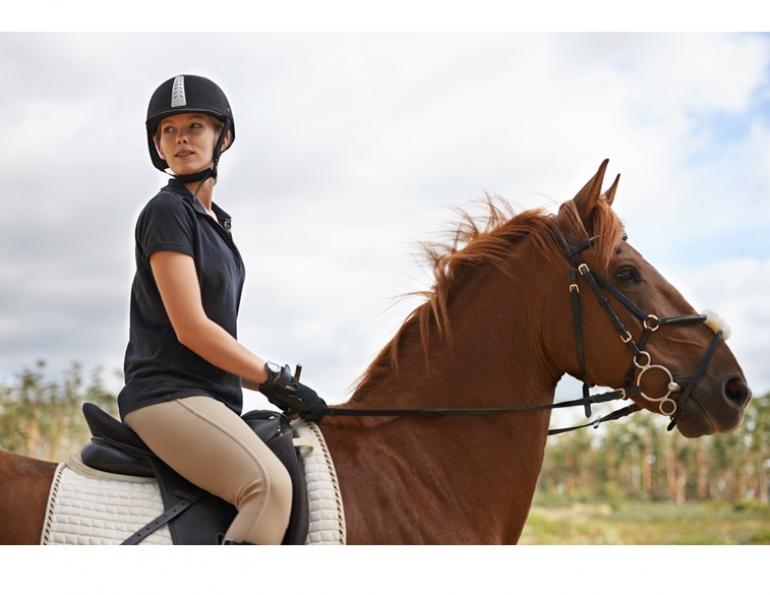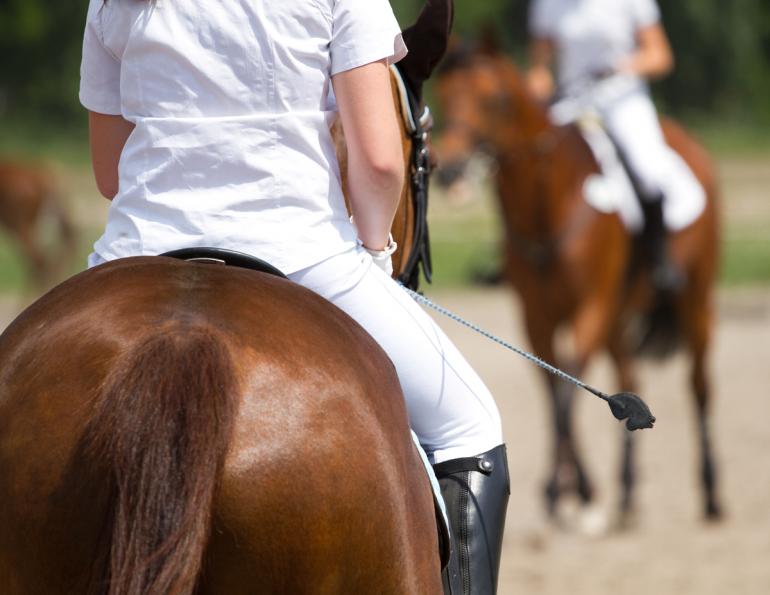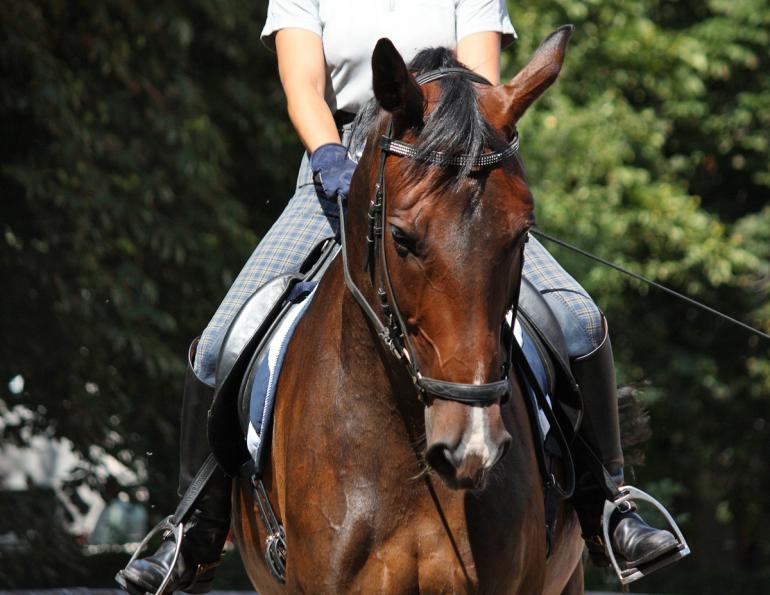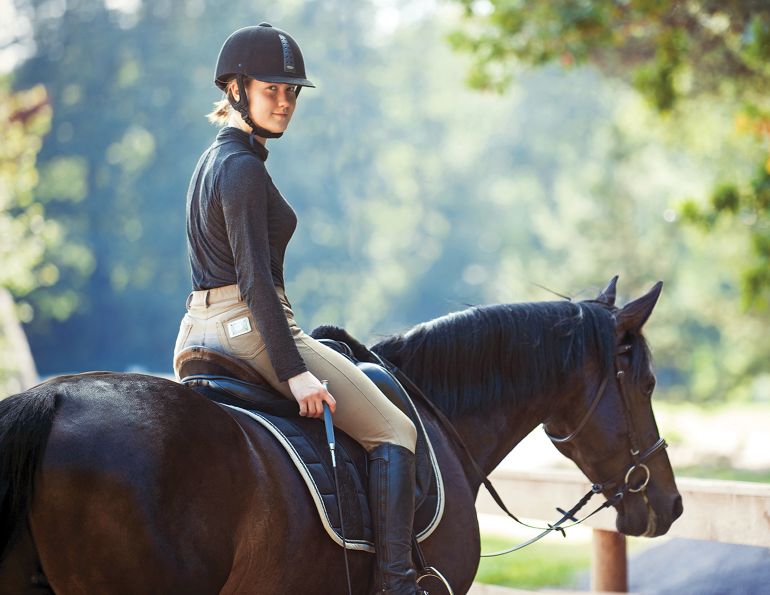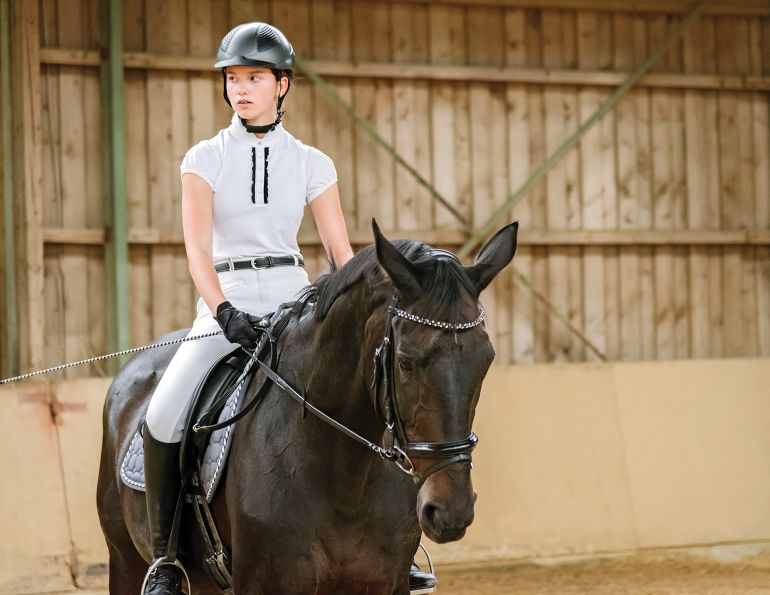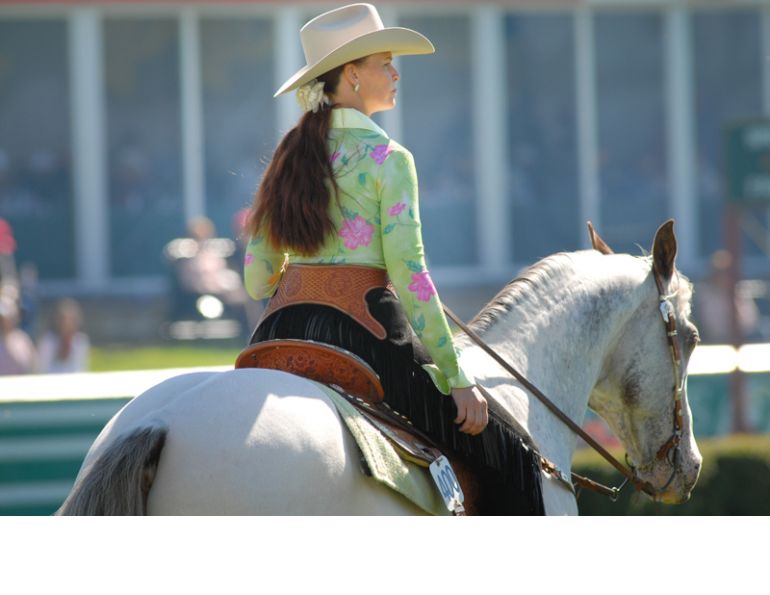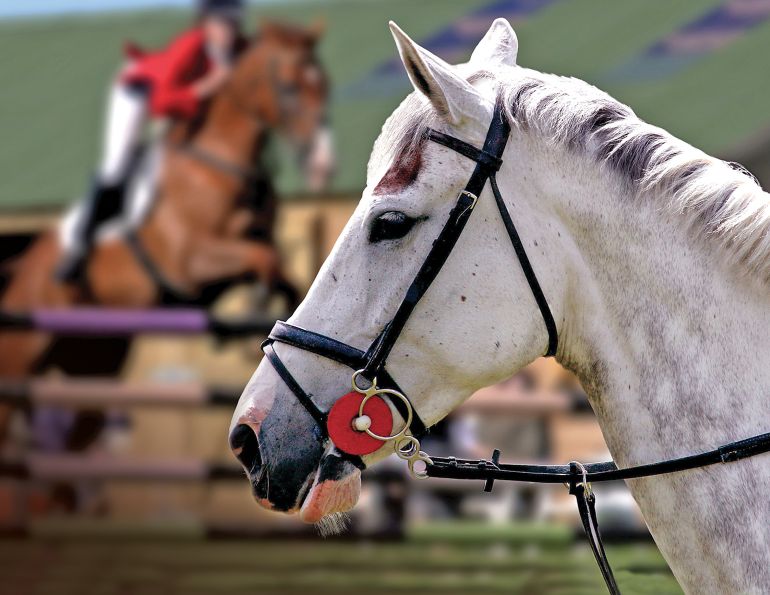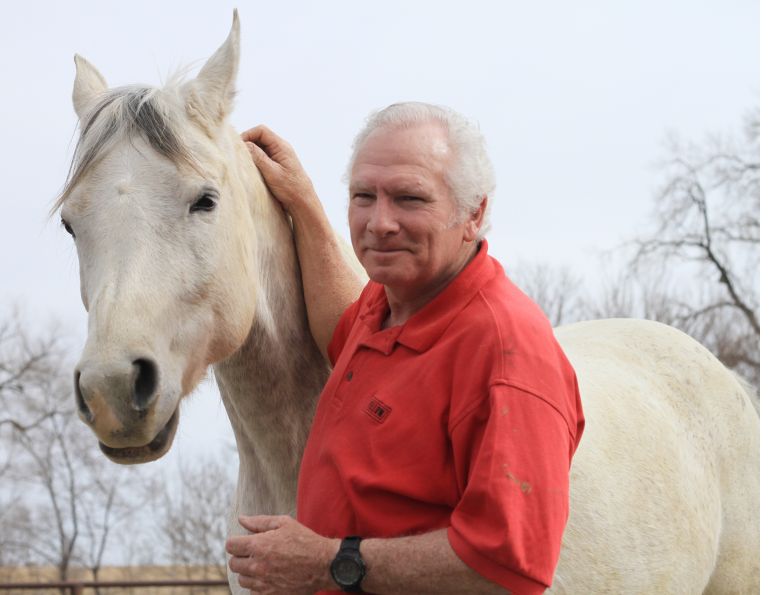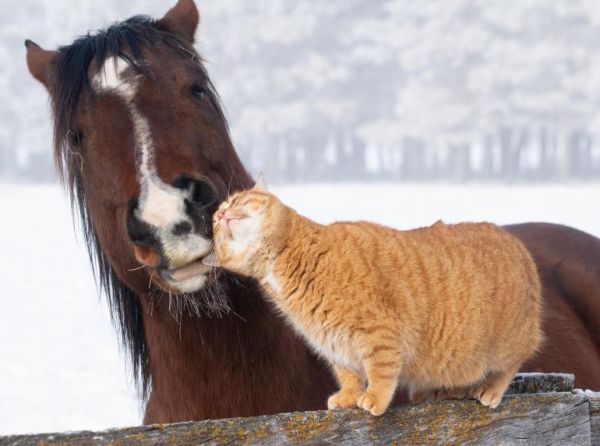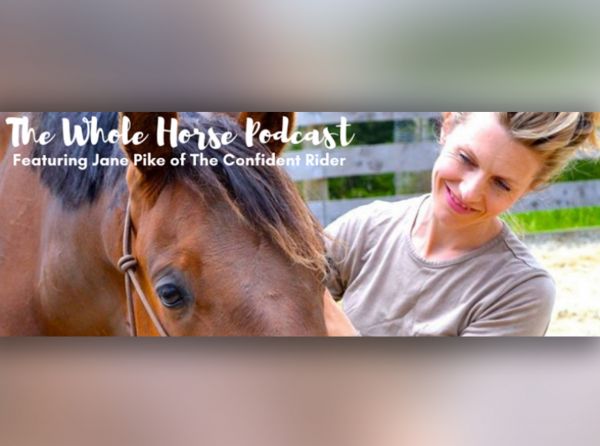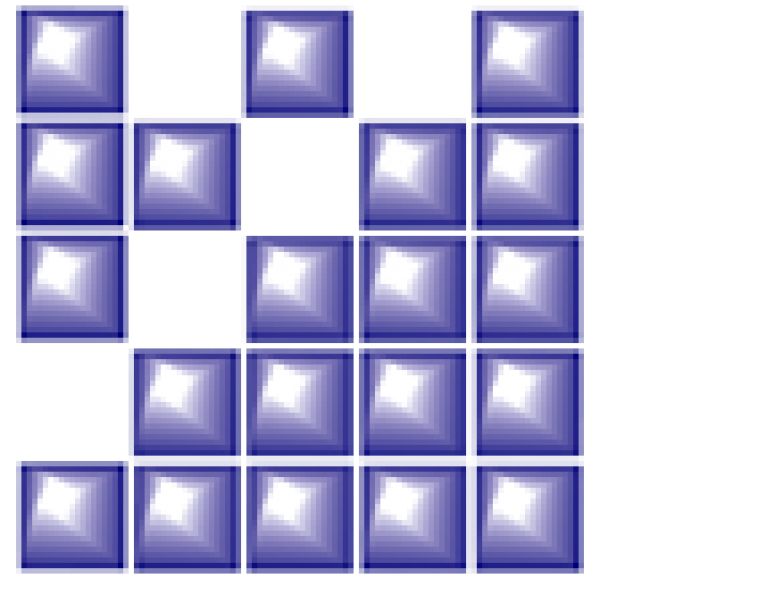By April Clay, M.Ed., Registered Psychologist
Analysis can feel pretty good. Tearing apart the details of a problem or task tends to bring forward feelings of control.
And as human beings, we all love being in control. Riders seem to enjoy it even more.
It must have something to do with our very challenging sport, the fact that our teammates (horses) sometimes like to grab a little of that control themselves.
But analysis does have a dark side. It can lead to the “thinking too much” syndrome. Most riders have experienced this trap. You start out with the best of intentions, trying soooo hard, but then your poor overloaded brain just shuts down on you. You stop riding. You freeze, choke, avoid or get that famous glazed over look your coach hates to see. Why does this happen? What can be done about it? Just what is the right amount of thinking?
When Thinking is Good
Thinking things through is a valuable asset when you are learning. Remember when you first learned your diagonals? Your instructor had to break down the steps for you, including glancing at your horse’s shoulder. How about a new, more complicated skill you are in the process of learning now? This might be a half pass, roll back or mastering more advanced body position control. Whatever the skill, you have likely simplified the activity into chunks of bite-sized learning. Sure, it takes longer when you try it, and it’s a little awkward. But, slowly you can gain familiarity with those steps until you can put it into a complete whole.
So in a nutshell, you can say that thinking and analyzing fit well into training. You need to scrutinize the steps, and dissect where you might have gone wrong with the steps until you develop proficiency. It’s the left side of your brain that helps you out with all this examination. It is sometimes referred to as the “analyzer.”
When Thinking is Not so Good
A lot of thinking is actually not so great for your performance. While it’s the left-brain that assists us in analysis, it’s the right side that puts everything together. This is why the right side is sometimes called the “integrator”. Have you ever noticed how your very best rides had that “flow” quality? That’s because in effect you had let go and allowed things to happen. Performance has an awful lot to do with trust. You have to trust yourself, trust in your training and just let it happen. The right brain helps you to do this, allowing your instincts and muscle memory to do what you know how to do!
Related: Relaxation for Riders: Learn to Chill Out
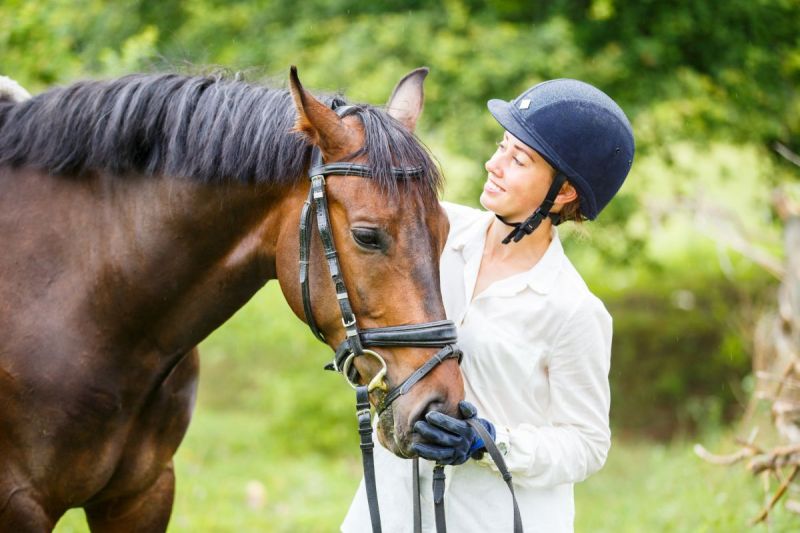
No one will ever know what tunes you're playing in your head, but they'll see the smile on your face and the confidence in your ride. Photo: iStock/Sergio Kumer
It’s not hard to tell the difference. Try this simple exercise: the next time you make an error in training experiment with two different approaches. Try stopping and dissecting your ride. Take it apart piece by piece and walk yourself through the correction. Talk away to yourself; even exaggerate your self-talk to the extreme. Alternate this with trying to just picture your correction in your mind and then without any further thought, do it. When you compare and contrast these two different approaches you will likely see the power of the right brain. It can put it all together for you, without all the distracting inner dialogue, which has this nasty habit of interfering, slowing you down or even freezing your intended action.
Thinking Too Much and Nerves
The “thinking too much” trap frequently happens when we are nervous. It’s an unfortunate part of the flight or fight syndrome. Something inside you says “danger” and your body and mind react automatically. The danger could be a big jump, a judge, your parents watching you or the fear of failure. Your body pumps more blood to your major muscles in case you need to get away or fight a foe. It moves away from your digestive system, while stomach acid floods your stomach causing those much-hated butterflies. And your mind? Well, your left-brain goes into overdrive, and starts chatting away at you. It says, “I’ve analyzed this and it doesn’t look good for you ...what if this happens — what if that happens ...oh, you are in big trouble! Maybe you should quit now, you can’t hack it.” On and on it goes, all the while your focus is narrowing down to a tunnel. You can’t take in all the vital information you need to make your ride work. Pretty soon that chatter turns into reality and you choke. I’ll bet you never knew you had your darned left-brain to thank for it!
I don’t want to paint a horrid picture of one half of your brain. As discussed, it is a good worker; you just have to put it to the right kind of task. Now, how can you turn this “too much thinking” around?
Related: Relationship Rescue: Communication is a Two-Way Ride
5 Ways to Think Less, Ride Better
There are a number of strategies you can implement to free you from the confines of paralysis by analysis. What they all have in common is the activation of your right hemisphere. You might even say this is what “riding in your right mind” looks like!
#1 Direct your focus to physical sensations
Put your focus on the feel of your horse, or the motion of your body. The more you place your mind on what your senses have to tell you, the less it will be on all that chatter in your head. Your mind will want to trick you, tell you it needs to listen, that it is has vital information to keep you safe. Don’t buy into this. You need to be in the here and now with your horse, and there is no quicker route there than through your senses.
#2 Generate an image
What kind of a ride are you trying to achieve? Maybe it’s a “soft” dressage ride. In this case, you could think about marshmallows, feather pillows or fluffy clouds. If you want to ride more aggressively, try conjuring up a picture of a charging rhino, proud lion or even Clint Eastwood! What if you need to be brave? How about a well-armored knight riding into battle? The lion from the Wizard of Oz?
#3 Play a sound-bite
If there was a soundtrack that would best fit the ride or kind of mood you would like to encourage in yourself, what would it be? Back in my riding days, one of my favourites was the theme from the movie Caddyshack. Because it was light and kind of cocky, it helped me lighten up and loosen up before hitting the ring. Hear whatever you like in your head, techno, hard rock or even Abba! No one will ever know what tunes you’re playing in your head, but they’ll see the smile on your face and the confidence in your ride.
#4 Develop a cue phrase
Remember Muhammad Ali’s famous line, “float like a butterfly, sting like a bee”. This helped him get in the mood to fight, to be the best. What could be your line? Now, this is not to be confused with a lot of left-brain talk. It’s just a simple phrase that packs big emotional punch. Some examples from other riders include “go hard or go home”, and “reins to the right” (right brain that is).
#5 Creating new habits
At home in training, it is common to stop when we make mistakes. Then, of course, we analyze what went wrong and try to correct it. It gets to be a habit. In a performance situation, however, you need a different kind of habit to form — the habit of quickly assessing a situation and choosing a course of action. Yes, it means you have to commit and that you may make the wrong decision sometimes. In the long run though, you will speed up your learning and your horse will thank you for being a more decisive communicator.
The central idea is to move to action and away from dissection. Action dissipates tension and adrenaline and channels your energy in the right direction. It’s like Nike says: “just do it”.
Related: How to Manage Your Mind and Emotions at a Horse Show
Related: Mantra Magic - Power Up Your Ride
Main photo: iStock/People Images



